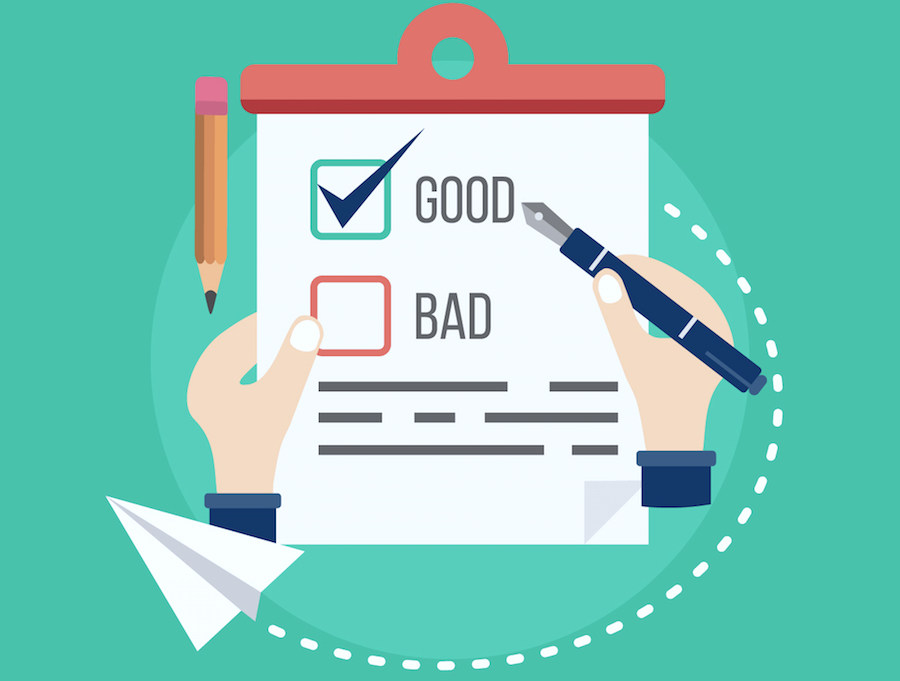
How do you know if your workflow has stopped working for you?
There may be times throughout the year when you need to reevaluate whether your workflows are achieving the desired results.
Or, you might find yourself in a situation where you are working from previously developed workflows – maybe from past leadership or old processes – that no longer fit the needs of your current team, processes or goals.
In either case, it might be time for a workflow audit.
Workflow audits are often a necessity for keeping everything running smoothly in your organization. But where do you start? When do you know it’s time to evaluate and what should you look for?
Here are a few tips for performing workflow audits:
[content_upgrade cu_id=”16927″]Free download: Tips for Performing a Better Workflow Audit[content_upgrade_button]Click Here[/content_upgrade_button][/content_upgrade]

When Should You Perform an Audit?
Sometimes faulty or antiquated workflow can be easy to recognize.
[bctt tweet=”When workflows are outdated, bottlenecks become noticeable rather quickly.” username=”gravityflow_io”]
However, in some cases, a workflow is just good enough to get things done, but it’s not optimized to its full potential. This can make it harder to detect whether your workflow is effective, because you are still reaching your goals, albeit slower than you could be.
So when do you know it’s time for a workflow audit? Generally speaking, you should perform a workflow audit when any of the following occur:
- Noticeable bottlenecks or delays are present
- Basic tasks feel illogical or cumbersome
- Significant changes to your team roles
- Significant changes to your processes
- New team roles are added or new processes put in place
- Goals are not being met at the desired rate of speed
Even if you don’t notice slowdowns or things haven’t changed much in the last 6-12 months, you should still perform a workflow audit at least once a year. This ensures that you’re meeting your goals and that everything is optimized for the best results.
Where to Begin the Evaluation Process
Before you begin the actual workflow audit, you need to make sure that you have a clear understanding of what your workflow should be achieving.
Make a list of ideal outcomes
Make a list of outcomes and note any places where they are not being achieved.
If the goal of your workflow is to process new hire paperwork and you know that paperwork should be approved and uploaded into the system within 48 hours of a new hire, that should be the benchmark for your audit.
It may require you to audit the process over several months. You could also go back through your records to see how long paperwork was uploaded into the system, so you know how long the actual process takes. If you notice that things were not uploaded in 48 hours, you have a good starting point for an audit.
Map out complex workflows
Determine if any of your workflows overlap. If you have multiple complex workflows, you will need to have them mapped out clearly (we often recommend using a swim lane diagram, as they can give clear detail to complex workflows).
If you have a complex workflow, it’s worth mapping them out in case a potential bottleneck in one workflow is actually caused by another related workflow or process. The more accurate your workflow maps are, the better results you will have.
Define all roles and responsibilities
Effective workflow modeling depends on defining and clarifying roles at every step, especially if roles have shifted or been added in the last 6-12 months.
Each participant needs to know what he or she is responsible for, at what point input or action is needed, and to whom the workflow is handed off to once those responsibilities are fulfilled. You may have to explicitly state what each person is tasked with so you can be certain that no steps are left out.

How to Perform a Workflow Audit
After you have completed the above, you should be ready to perform a workflow audit.
1. Create a workflow inventory
Create a master workflow inventory that includes all of your workflows. List each process, write down what you believe the purpose of that process is, and then list all of the people within your organization that is involved with this process.
You may be surprised at the amount of workflows in your inventory, and that’s okay. As long as you have a general picture, you can start to narrow down your audit.
2. Rank your workflows
Once your inventory is complete, you can then audit individual workflows as needed.
Using your inventory, rank each business workflow from most important to least important.
This may be more difficult, as some processes can be interrelated or dependent, but do your best. This will give you a sense of where to start your audit if you don’t have a specific workflow in mind. Be sure to get input from your team if you don’t know which processes are most important, as they can help you decide which process to streamline first, second, third and so on.
3. Break down workflows in processes
If you have already mapped your workflows, this step should be done for you. If not, do it now. You want to break down each of your workflows into discrete steps – the more granular, the better.
What’s most important in this step is to capture the beginning, middle and end (or desired outcome) of the process you’re aiming to streamline.
4. Monitor your workflows and solicit feedback
You may already have noticed there are areas in your workflows where there are bottlenecks or breakdowns, but if not, you may need to gather reports from your team and solicit feedback from colleagues, co-workers, subordinates, supervisors and anyone directly or indirectly involved in the business workflow chain or the outcomes that the process produces.
Keep in mind that perfection is not always the goal. Very few processes will be perfect, but your workflows should be getting close to your ideal outcomes. Remember the old adage, “progress, not perfection” when evaluating.
5. Remap your workflow
Once you have identified a few areas that may need improvement, you will need to come up with a few solutions to improving the process. You may need to remap the whole workflow – in which case, you would want to start from the brainstorming session and work down from there.
Alternatively, you may just need a few small tweaks or role changes to solve your problem. Remap your new workflows with the new changes and additions. If you are adding new workflows to the process, be sure to update your workflow inventory.
6. Automate and implement your updated workflow
Use a business workflow management tool (like Gravity Flow) to map out your final workflow and automate any processes. Once your new workflow is in place, you will need to monitor it for any changes to your outcomes.
If you notice that things are improving, continue with your new workflow until your next scheduled audit. If you notice that things are not improving or have become noticeably worse, you will need to follow steps 1-5 again.
7. Refine as you go
Again, no process or workflow will ever be completely perfect. Once you have improved your existing process to come as close as possible to your desired outcomes, you should expect to continue to refine your processes over time.
It may be helpful to create a schedule of workflow audits every few months, so as not to audit everything all at once, and to have a plan in place to review processes to help you notice slowdowns as soon as they happen.
[content_upgrade cu_id=”16927″]Learn more with this guide to performing workflow audits[content_upgrade_button]Click Here[/content_upgrade_button][/content_upgrade]
Final Thoughts
Mapping out your workflows will be an essential step to performing a workflow audit, so be sure you know how to map out your workflow properly (we have tips for you here and here).
You may need to gather feedback from various members of your team in order to determine when an audit should take place. Keep in mind that some audits may take longer than others, depending on the complexity of the workflow, so give yourself enough time.
If you find that you keep auditing the same workflows repeatedly, know that it’s okay to scrap it and build a new one that fits your outcomes. Don’t keep tweaking an outdated workflow if it’s just not accomplishing your goals.